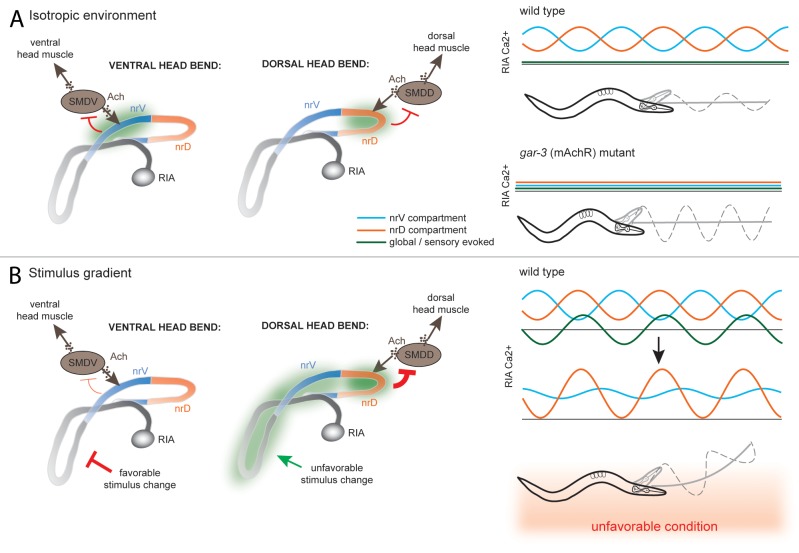Figure 3. Model for RIA function in gradient navigation. (A) In an isotropic environment, RIA monitors head movement via input from SMD class motor neurons and mediates negative feedback, limiting head deflection via compartmentalized Ca2+ signals of nrV and nrD that correlate with head bending. In gar-3 mutants, compartmentalized signaling is lost, leading to an increase in gait amplitude. (B) When perpendicular to a gradient, sensory changes across head swings cause global Ca2+ changes that are in phase with head bends in the unfavorable direction and antiphase with the favorable direction. This increases Ca2+ signaling and damps head bending in the unfavorable direction and extends it in the favorable direction. This asymmetry leads to curvature of locomotion in the favorable direction.

An official website of the United States government
Here's how you know
Official websites use .gov
A
.gov website belongs to an official
government organization in the United States.
Secure .gov websites use HTTPS
A lock (
) or https:// means you've safely
connected to the .gov website. Share sensitive
information only on official, secure websites.
